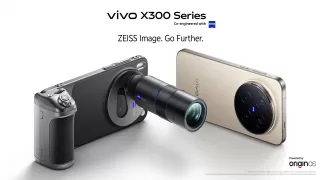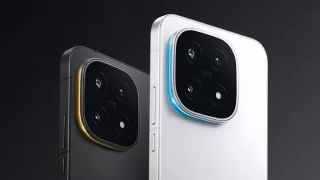Microsoft has rolled out its much-awaited October 2025 update for Windows 11, and this one is a game-changer. With the company officially ending support for Windows 10 on October 14, 2025, the tech giant is now pushing the limits of what modern PCs can do. The latest Windows 11 update comes loaded with cutting-edge AI features, transforming every compatible device into what Microsoft proudly calls an “AI-powered PC.” From deeper Copilot integration to brand-new gaming intelligence tools, this update marks a bold new era for Windows users worldwide.
Unlike previous patches that focused mainly on security fixes or interface polish, this release fundamentally changes how Windows 11 operates. Artificial intelligence now lies at the core of the operating system. Microsoft’s Copilot — once seen as a simple assistant — has evolved into a powerful agent capable of performing complex tasks, understanding natural language, and even responding visually to what’s on your screen. This means users can now interact with their PC through simple conversation and gestures, as if the computer truly understands them. Alongside this, the update introduces the groundbreaking Gaming Copilot (Beta), designed to enhance the gaming experience with real-time, intelligent suggestions and performance insights.
For Microsoft, this is more than just another update. It represents the company’s vision of an intelligent computing era — one where your device anticipates your needs, simplifies your workflow, and adapts to your behavior. By deeply embedding AI across the system, Windows 11 is becoming less of a static platform and more of a dynamic, evolving companion for work, creativity, and play.
AI Takes Over: Windows 11 Becomes Smarter Than Ever
The October 2025 update gives Copilot in Windows 11 a major upgrade. It’s no longer just a sidebar assistant — it’s now integrated across the entire system. The new Copilot can execute multi-step commands, summarize emails, generate documents, manage schedules, and even help code applications through its built-in AI reasoning engine. For professionals, students, and creators, this makes daily tasks smoother and faster than ever before.
Microsoft has also introduced “contextual intelligence,” allowing the AI to understand what’s happening on your screen in real-time. If you’re reading a long article, Copilot can summarize it instantly. If you’re editing photos, it can suggest brightness or color corrections. And if you’re working in Excel or PowerPoint, Copilot can create visual charts or auto-generate slide content from raw data. Everything happens seamlessly, with minimal user effort — transforming productivity into something almost conversational.
Voice and vision capabilities have also been enhanced. You can now talk to your PC naturally, give instructions, or ask questions that Copilot will act upon. The AI can even recognize images, text, and layouts to understand your intent better. Essentially, Windows 11 is no longer just an operating system — it’s becoming a thinking assistant that learns how you work and helps you get things done faster.
Gaming Copilot (Beta): The Future of AI-Powered Gaming
One of the most exciting parts of this update is the debut of Gaming Copilot (Beta). Microsoft has reimagined gaming assistance for a new generation, introducing an AI tool designed specifically to improve gameplay. The Gaming Copilot acts like an intelligent in-game companion that provides real-time tips, suggests strategies, and helps players optimize performance without interrupting their experience. For instance, it can analyze your in-game progress and recommend tactics or settings adjustments to improve frame rates and responsiveness.
This feature also arrives alongside the newly launched Asus ROG Xbox Ally series handheld consoles, which now sync effortlessly with Windows 11 PCs. The integration between Gaming Copilot and these devices means players can switch between PC and handheld gaming environments smoothly, with AI maintaining consistent support across both. Whether it’s identifying weak points in an opponent’s defense, optimizing system performance, or even suggesting custom control layouts — the AI ensures gamers always have the upper hand.
Beyond just assistance, Microsoft’s vision extends to using AI for creative purposes in gaming. Developers can use these AI tools to generate environment textures, create adaptive soundscapes, and design smarter NPC behaviors. This means games can evolve dynamically based on how players interact, ushering in a new era of immersive, personalized gaming experiences that continuously learn from each session.
Goodbye Windows 10: A New Chapter for Microsoft
As Windows 10 officially reaches the end of its lifecycle, October 2025 marks the beginning of a new chapter for Microsoft. After years of updates and patches, the company has now ceased technical and security support for all Windows 10-based systems. This move encourages users to upgrade to Windows 11 to continue receiving essential updates, improved security, and next-generation features. Microsoft has made it clear that its future lies with AI-driven computing, and this update is the clearest evidence yet.
For users still clinging to older devices, Microsoft has provided temporary paid support through an Extended Security Updates (ESU) program. However, the company strongly recommends upgrading to hardware that supports Windows 11 to take advantage of its AI enhancements. The upgrade process itself has been simplified, with better compatibility checks, faster installation, and fewer reboots than earlier versions. The transition from Windows 10 to Windows 11 is designed to be seamless — and, in many ways, essential for anyone wanting to stay future-ready.
Microsoft’s decision to retire Windows 10 isn’t just about phasing out old software; it’s about moving toward a smarter, more interconnected ecosystem. With artificial intelligence now at the heart of its products, Microsoft envisions a world where PCs think, learn, and evolve alongside their users. The October 2025 update makes that vision more tangible than ever.
What’s Next for Windows Users?
Looking ahead, Microsoft plans to expand these AI capabilities even further. Future Windows updates are expected to bring advanced “Vision” features, allowing Copilot to recognize objects via a webcam or screen and respond intelligently. Imagine pointing your camera at a document and having Windows instantly translate, summarize, or extract key data — all within seconds. This level of intuitive interaction will make PCs feel more human, bridging the gap between digital and real-world understanding.
The October 2025 update also refines several core system features. Boot times are noticeably faster, animations smoother, and overall system responsiveness more consistent. Battery life has been optimized for laptops, and background power management now automatically adjusts based on user behavior. The taskbar and Start menu have also received design enhancements, making navigation cleaner and more intuitive. For creative users, Microsoft has expanded support for touchscreen gestures and stylus input, ensuring seamless multitasking on convertible laptops and tablets.
Overall, this update isn’t just another upgrade — it’s a major leap forward. Microsoft has redefined what a modern operating system can be by merging intelligence, design, and usability. The October 2025 Windows 11 update doesn’t just improve performance; it reimagines how users connect with their devices. As AI becomes the foundation of the Windows ecosystem, the line between user and machine continues to blur, promising a future where your PC doesn’t just work for you — it works with you.
Also Read: OnePlus Rolls Out OxygenOS 16 in India with Android 16 Boost




























